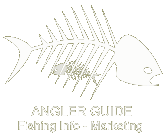 |  |
|
Navigation - Business - Great Lakes - Great Plains - Northeast - Northwest - Rocky Mountains - Southeast - Southwest - Technology - Trophy Catches
|
This window of high water will help recover fish habitat in the South Fork Boise River, one of Southwest Idaho’s most important trout streams. This river not only supports critical habitat for migratory bull trout, it is also Southwest Idaho’s premier rainbow trout fishery. Large volumes of sediment and debris can dramatically change fish habitat. Fine sediment fills in pools, side channels and small spaces between cobble stones, which are important winter habitat for small fish. Sedimentation also reduces the abundance and diversity of the insects that fish eat. On the positive side, debris can add new spawning gravels and woody debris, both important for producing young fish and creating cover where fish hide. While fish populations may decline shortly after mudslides, they usually rebound in the long-term; benefiting from added nutrients, gravels and woody debris. Debris flows into Idaho’s rivers are common after fires. In naturally flowing rivers, fish habitat improves quickly as high spring runoff moves sediment and debris downstream. In regulated rivers like the South Fork Boise, dams store water for irrigation and flood control, inhibiting peak flows. A multi-agency team developed recommendations to increase flows next week to mimic spring runoff, helping to restore habitat in the South Fork Boise at a time when water is available. Staff from the US Forest Service, US Bureau of Reclamation, University of Idaho, Trout Unlimited and the Idaho Department of Fish and Game cooperatively developed the strategy to provide a pulse of high water to benefit fish and insect communities in the river.
Comments
«Back | News Home
| |||||||||||||||||||||||||||||||||||